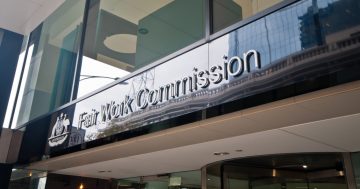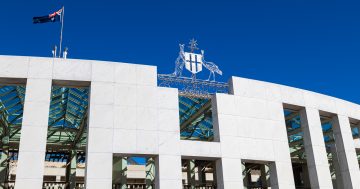David Taylor* says the RBA has changed its mind on pay rises and it’s a bitter pill to swallow as business profits go up.
 Did you feel a sense of frustration, or even anger, when the Reserve Bank governor said workers’ pay rises should be capped at 3.5 per cent?
Did you feel a sense of frustration, or even anger, when the Reserve Bank governor said workers’ pay rises should be capped at 3.5 per cent?
It’s a bitter pill to swallow when the data shows the cost of living – CPI at 5.1 per cent – is rising faster than that.
But it also may have come as a surprise considering that as recently as March the Reserve Bank governor Philip Lowe said the bank was keen to see evidence of stronger wage growth.
“Wages growth also remains modest and it is likely to be some time yet before aggregate wages growth is at a rate consistent with inflation being sustainably at target,” Dr Lowe said.
And there were still no signs of any real lift in wages growth in April.
“Inflation has picked up and a further increase is expected, but growth in labour costs has been below rates that are likely to be consistent with inflation being sustainably at target.”
So what changed?
It began last month when the Reserve Bank stated that, “the more timely evidence from liaison and business surveys is that larger wage increases are now occurring in many private-sector firms.”
All of a sudden, without warning, wages growth, after a decade of hovering around record lows, was suddenly experiencing lift off.
How do we know this?
Well, the Reserve Bank’s liaison program informed the bank’s board it was happening.
The Reserve Bank surveys businesses and business groups to gauge whether or not they are offering pay increases.
The RBA’s April liaison program consisted of 63 meetings with businesses and business groups.
The majority of the meetings were with individual businesses.
More on that later.
But outside of that, are we actually seeing enough evidence of stronger wages growth?
Are wages growing?
Yes, wages are growing.
They have been for some time.
But there’s an important distinction between wages growth and the strength of that growth.
That’s because the cost of living, or inflation, is also climbing – hence why the pace of wage growth becomes important.
The inflation of your pay packet needs to match the inflation of the prices of the goods or services you buy — otherwise your money doesn’t go as far.
The latest data from the Bureau of Statistics (wage price index) show flat wages growth.
Wages grew at 0.7 per cent in the December quarter and the same amount in the March quarter.
The National Australia Bank measures wages too.
It shows “labour costs” increasing by 2.7 per cent.
But that measure takes into account record levels of employment, not increases in pay packets.
The Australian Industry Group also measures wages in its “wages index”, but that measures how many firms are increasing or decreasing wages, not the size of the increases or decreases.
So, are we seeing strong wage growth?
The answer is only “yes” if you accept what the Reserve Bank is seeing via its liaison program, which several economists have told the ABC shouldn’t be used on its own in terms of concluding there is economy-wide strong wage growth.
Critics say the program doesn’t provide a representative sample and should not inform monetary policy.
What’s driving inflation then?
So if stronger wages growth isn’t driving the bulk of inflation, what is?
There are obvious sources of elevated inflation like the war in Ukraine and the pandemic.
We know obtaining component parts and inventory is an on-going struggle for businesses, and they are taking on higher costs, which they are passing onto customers.
We also know shoppers are dipping into their savings and higher consumer demand is lifting prices.
Many reading this column will also be acutely aware of the rising cost of petrol and the increase in your energy bill.
But there’s another force at play here.
Retailers are finding they are able to pass on price increases without too much bother at present.
Here’s an excerpt from an internal Reserve Bank email thread on April 29 highlighting this phenomenon, obtained via a Freedom of Information request.
“Retailers generally expect higher product and freight costs to persist for at least the next few months, due in part to higher oil prices and lockdowns in Shanghai disrupting shipping.
“As a result, many retailers expect to increase prices further over the months ahead.
“Retailers have largely limited price increases to items where cost pressures have been most pronounced and/or where demand is relatively inelastic.
“Few have observed significant shifts in consumer behaviour so far following price increases, but they are expected.”
In other words, businesses are noticing that when they pass costs onto customers, they absorb them, which means higher costs of doing business don’t hit the bottom line.
The chief economist of the Australia Institute, Richard Denniss, recently noted that this is due to a broader issue in the Australian economy.
That is, a lack of corporate competition.
“Our energy, retail, transport, grocery, banking and retail businesses are among the most concentrated and most profitable in the world.”
It leads to what Denniss labels the “profit-price spiral” – essentially firms have the power to raise prices, and they do so when they need to and, frankly, when they want to boost profits.
Back to wages again
So, let’s re-cap.
Inflation, or the rising cost of living, is causing financial pain for millions of Australian households.
There’s no evidence stronger wages growth led to the 5.1 per cent inflation for the March quarter.
The evidence higher wages growth will lead to elevated inflation in coming months has been questioned by several economists, including independent economist Saul Eslake.
So, why then would the Reserve Bank, and the Bank for International Settlements (BIS), express concern about the possibility of Australian wage growth rising about 3.5 per cent?
They clearly believe workers across the economy are about to be the recipients of fatter pay packets.
There are big question marks around whether this will eventuate, notwithstanding the recent decision by Fair Work to increase the minimum wage by 5.2 per cent.
ACTU Secretary Sally McManus believes the warnings are ridiculous.
“All of this is just a fantasy because they don’t understand what actually happens at the bargaining table,” she told ABC RN.
“Wages on March 31 were 2.55 per cent up, how is that anywhere near what he is saying in 3.5 per cent?” McManus said.
It’s all about fear
A harsh reality in life is that change often produces winners and losers.
We’ve seen a heck of a lot of change in recent years.
It’s produced inflation which has seemingly come out of nowhere.
It has to be absorbed by someone or something.
Business representatives and the Reserve Bank say workers should absorb the hit in the form of a real wage cut – in other words ensuring wages growth does not keep pace with inflation until inflation subsides.
This avoids the wage-price spiral.
If wages growth accelerates, firms will likely pass on much, if not all, of the wage increases in the form of higher prices for their customers.
That leads to higher inflation.
Workers then, again, demand higher pay to ensure they don’t go backwards.
It’s absolutely something to worry about if, and that’s a big if, wage growth shows signs of accelerating.
But doesn’t it make more sense for larger firms, which we know are, in aggregate, making record profits to absorb the inflation hit?
The share of company earnings going to profits is at an all-time high and the share to workers is at an all-time low.
Stocks on Wall Street shot up late last week after a measure of consumer confidence fell to an all-time low.
The thinking among traders was that this was “good news” because it meant the US Federal Reserve wouldn’t increase interest rates quite so far as had been feared.
Is that where we’ve arrived – where the owners of capital feel relief when it’s clear the economic environment is miserable enough to keep the cost of investing as cheap as possible?
Surely there has to be some give and take within the economy? Companies and employers need workers as much as workers need companies and employers.
We seemed to have lost sight of this.
*David Taylor is a business reporter for the ABC’s Audio Current Affairs programs.
This article first appeared at abc.net.au.











